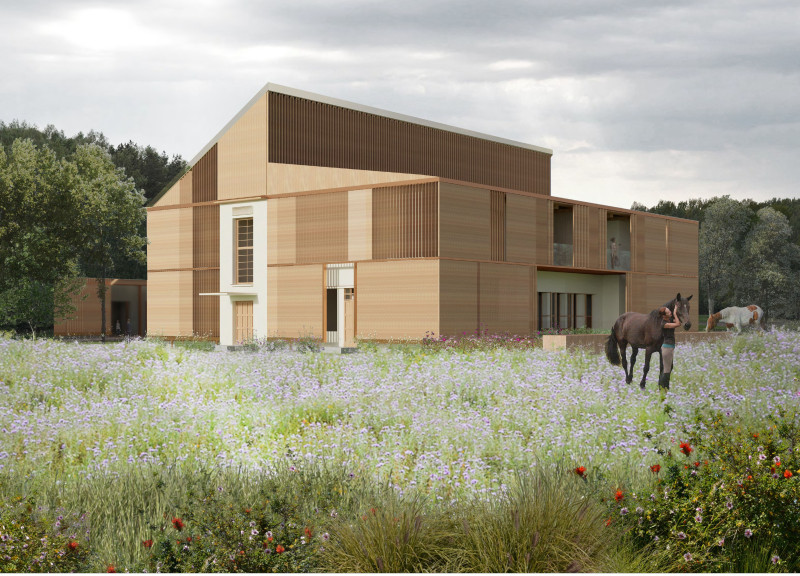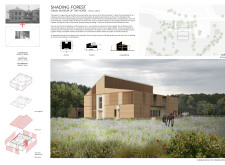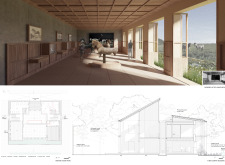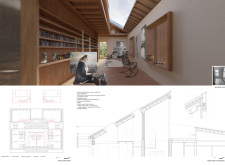5 key facts about this project
The Omuli Museum of the Horse is a cultural venue located in Omuli, Latvia, that repurposes the old Omuli school. The design aims to keep the historical essence of the building while introducing new features that benefit both the local community and visitors. The overall concept revolves around sustainability, cultural preservation, and encouraging connections among users.
Design Concept
The design focuses on retaining the existing structure and integrating a new facade to improve the connection between inside and outside. A secondary wooden envelope wraps around the building, serving both aesthetic and practical purposes. This dynamic facade can adapt to environmental changes. Its modular design allows for elements that can pivot and fold, which helps control light and temperature inside the building.
Spatial Organization
The renovation unfolds in three distinct phases, thoughtfully considering the building's historical importance. The first phase is dedicated to preserving what is already there, making sure the cultural significance remains intact. The second phase looks to improve comfort and energy efficiency. The final phase adds new functionalities, reflecting the current needs of the community. This structured approach ensures that each step respects the past while also embracing the future.
Materiality and Construction
In selecting materials, the project prioritizes items that match the existing features of the building. Original bricks and wooden elements are kept in place while adding new wooden panels and sturdy concrete walls for stability and energy performance. This selection creates a conversation between old and new, reinforcing the building's identity and its historical context.
Public areas are designed to be open and inviting, including an entry hall and exhibition spaces that promote accessibility. Attention to detail enhances interactions within the museum. The design fosters connections between visitors and the surrounding environment, enriching the experience of both cultural heritage and community engagement.






















































